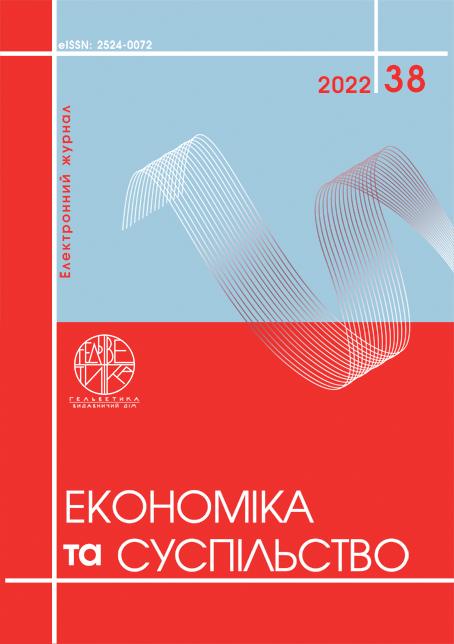LABOUR COMPENSATION STRATEGIES/PRACTICES OF MARITIME INDUSTRY-DISCUSSION ON CRITICAL CASES
Abstract
This study would be significant, especially for Trade Unions and shipping lines, and to make newcomer professionals more aware of the nature and alternatives available for labour compensation. This paper contributes to readers’ empirical and practice insights on maritime labour, law and professional practices, including management issues and implications. In addition, professionals involved in maritime labour matters like maritime lawyers, mediators, Insurance professionals and Trade Unions. Practically, this paper is structured as a teaching case study. It provides case-related descriptions, industry practices, legislative frameworks, and fundamental teaching rights facilitating as a teaching material, especially for domains on labour tribunals, maritime law, and labour compensation in related human resource aspects. The following objectives were taken into consideration in this teaching case study paper: to follow and assess the gaps where legislation has to meet to receive compensation for seafarer families; to create awareness of the current situation regarding compensation; to determine the future recommendations to make Union work more strategic. This teaching case study would observe the gap between the legislation and what is occurring in the practical scenario after seafarer recruitment during compensation policies. To present this case study, several relevant institutions, programs and scientific research were considered to increase union efficiency. The main conclusion of this paper highlights the importance of the union and the other programs, policies and strategies that should be adopted to make awareness of these issues.
References
Alastair Couper (2000) Implications of maritime globalization for the crews of merchant ships, Journal for Maritime Research, 2:1, 1–8. DOI: https://doi.org/10.1080/21533369.2000.9668303
Barney, J. (1991) Firm resources and sustained competitive advantage, Journal of Management, 17(1): 99–120.
Bhattacharya, S. (2012) Sociological factors influencing the practice of incident reporting: the case of the shipping industry, Employee Relations, Vol. 34 No. 1, pp. 4–21. DOI: https://doi.org/10.1108/01425451211183237
Bottalico, A. (2019) Towards the mapping of port labour systems and conflicts across Europe: a literature review. Work Organisation, Labour & Globalisation, 13(1), 130–154. DOI: https://doi.org/10.13169/workorgalaboglob.13.1.0130
Capt. Deepak Mantoju (2021) Analysis of impact of the maritime labour convention, 2006: A seafarer’s perspective, Journal of International Maritime Safety, Environmental Affairs, and Shipping, 5:3, 107–119. DOI: https://doi.org/10.1080/25725084.2021.1955475
Child, J. (1972) Organizational structure, environment and performance: the role of strategic choice. Sociology, 6(3): 1–22.
Child, J. (1997) Strategic choice in the analysis of action, structure, organizations and environment: retrospect and prospect. Organization Studies, 18(1): 43–76.
Child, J., Loveridge, R. and Warner, M. (1973) Towards an organizational study of trade unions. Sociology, 7(1): 71–91.
Doumbia-Henry, C., D. Devlin, and M. L. McConnell (2006) The Maritime Labour Convention, 2006 Consolidates Seafarers, Labour Instruments. 10(23). ASIL Insights. Retrieved from: http://www.asil.org/insights/060913.cfm
Doumbia- Henry, C. (2020) Shipping and COVID-19: Protecting Seafarers as Frontline Workers. WMU Journal of Maritime Affairs 19 (3): 279–293. DOI: https://doi.org/10.1007/s13437-020-00217-9
Efthimios Mitropoulos, (2005) Putting the Seafarers First, 20 transport international magazine.
Exchange Rates | Central Bank of Sri Lanka. (2022). Retrieved 7 February 2022, from https://www.cbsl.gov.lk/en/rates-and-indicators/exchange-rates
Gardner, M. (1989) Union strategy: a gap in union theory. In B. Ford and D.Plowman (eds.), Australian Unions: an Industrial Relations Perspective. Melbourne: Macmilla.
Home. Seafarers Rights International. (n.d.). Retrieved March 26, 2022, from https://seafarersrights.org/seafarers-subjects/deaths-and-injuries-at-sea/compensation-entitlements/
Ibid [Google Scholar]
Johnson, G. and Scholes, K. (1993) Exploring Corporate Strategy. Hemel Hempstead: Prentice-Hall.
Kossoris, M. D., & Zisman, J. (1946) Workmen’s Compensation for Seamen. Monthly Labor Review, 62(6), 851–861. Retrieved from: http://www.jstor.org/stable/41818126
Lillie, N. (2005) Union Networks and Global Unionism in Maritime Shipping. Relations Industrielles / Industrial Relations, 60(1), 88–111. Retrieved from: http://www.jstor.org/stable/23077637
Max D. Kossoris and Joseph Zisman, Source: Monthly Labor Review, Vol. 62, No. 6 (JUNE 1946), pp. 851–861 Stable. Retrieved from:: https://www.jstor.org/stable/41818126. Accessed: 24-03-2022 02:56 UTC
Maritime Industry Sector Guide. (n.d.). Retrieved March 26, 2022, from https://www.ctp.org.uk/assets/x/53125
Mevan Peiris: Unlocking Sri Lanka’s Maritime Potential | EconomyNext. (2022). Retrieved 26 March 2022, from https://economynext.com/brand_voice/mevan-peiris-unlocking-sri-lankas-maritime-potential/
Mintzberg, Henry. (1973) Strategy-Making in Three Modes. California Management Review. 16. 44–53. 10.2307/41164491.
NUSS Union Documents (2022).
Pendleton, O.W. (1948) Insurance Libraries, Journal of Documentation, Vol. 3 No. 4, pp. 232–249. DOI: https://doi.org/10.1108/eb026120
Pennings, J. (1985) Introduction: on the nature and theory of strategic decisions. In J. Pennings and Associates (eds.), Organizational Strategy and Change. San Francisco: Jossey-Bass.
Peter Gahan (1998) Union Strategy: A Conceptual Framework. Retrieved from: htttps://ssrrn..com//absttrractt=21176473
Porter, M. (1980) Competitive Strategy. New York: Free Press.
Porter, M. (1985) Competitive Advantage: Creating and Sustaining Superior Performance. New York: Free Press.
Porter, M. (1996) Strategy as revolution. Harvard Business Review, 74(4): 69–82.
Rumelt, R., Schendel, D. & Teece, D. (1994) Fundamental issues in strategy. In R. Rumelt, D. Schendel and D. Teece (eds.), Fundamental Issues in Strategy: a Research Agenda. Boston: Harvard Business School Press.
Seafarer fatalities shows shipping must do more. (2022) Retrieved 7 February 2022, from https://ihsmarkit.com/research-analysis/seafarer-fatalities-shows-shipping-must-do-more.html
Sri Lanka Household Income per Capita, 1981 – 2022 | CEIC Data. (2022). Retrieved 7 February 2022, from https://www.ceicdata.com/en/indicator/sri-lanka/annual-household-income-per-capita
The Maritime Labour Convention, 2006 – A Legal Primer to an Emerging International Regime. (2022) Retrieved 7 February 2022, from https://www.ilo.org/global/standards/maritime-labour-convention/WCMS_159413/lang--en/index.htm
Sampson, H. (2003) Transnational Drifters and Hyperspace Dwellers: an exploration of the lives of Filipino seafarers aboard and ashore, Ethnic and Racial Studies, 26, pp. 253–277.
Supporting seafarers on the frontline of COVID-19. (n.d.). Retrieved February 09, 2022, from https://www.imo.org/en/MediaCentre/HotTopics/Pages/Support-for-seafarers-during-COVID-19.aspx
Whittington, R. (1993) What is Strategy—and Does it Matter? London: Routledge.
UNCTAD 2020. [Google Scholar]
Zekos, G.I. (2004) The role of courts in commercial & maritime arbitration under US, Greek and English law, Managerial Law, Vol. 46 No. 2/3, pp. 1–310. DOI: https://doi.org/10.1108/03090550410771099
Zhang, P., Zhao, L., Vata, O. and Rajagopal, S. (2020) Restructuring seafarers’ welfare under the Maritime Labour Convention: an empirical case study of Greece, Maritime Business Review, Vol. 5 No. 4, pp. 373–389. DOI: https://doi.org/10.1108/MABR-02-2020-0009


